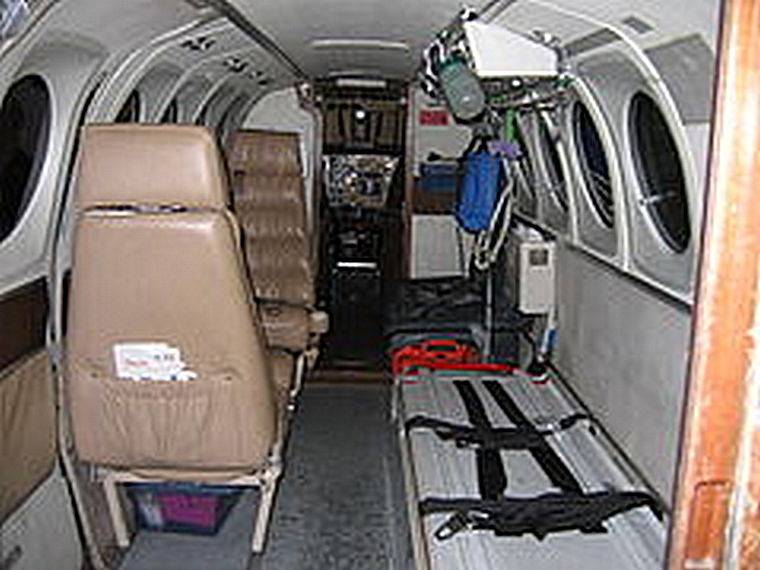My longest flight in one day
By Theo Truter
Medivac (medical air evacuation) flights tend to require major operational adaptation to get the patient speedily to life-saving advanced medical care.

There was an air ambulance service based in Harare, Zimbabwe and I had been hired as captain. Medical Air Rescue Services had been in operation since 1991 and they had a fleet of ambulances and well-trained staff.
On 5th September 2006 our task was to proceed to the Julius Nyerere airport in Dar-es-Salaam in Tanzania, there to collect a badly mauled American hunter and deliver him to Lanseria Airport in South Africa. The unfortunate fellow was attacked in turn by the buffalo that he had shot and then had to endure a torturous land journey to Dar-es-Salaam from the Selous Game Reserve.

Ideally this long flight should be carried out by a jet aircraft, but this was not available in Harare, so our trusty old BAe Jetstream 31 had to suffice. The registration was ZS-JSL with a high-time airframe and in which the auto-pilot had long ago lost serviceability, so all flying was by necessity by constant hand operation. Typically the aircraft was fitted with two Intensive Care beds on the right-side of the cabin, thereby replacing 14 twin-seats and adding full medical kit/equipment. Only five passengers remained on the left side of the cabin; the Flight Doctor and typically two Flight Nurses, leaving 2 seats for accompanying relatives.
 
Harare and Lilongwe from the air

Lilongwe Airport in Malawi
From Harare we needed to refuel en-route at Lilongwe in Malawi, as the leg to Dar-es-Salaam was marginally beyond the Jetsream's range. Fortunately the refuelling was accomplished without any undue delay so that we could resume the flight to our pick-up destination. On arrival there the medical crew boarded an ambulance to the hospital where the patient was, but they needed to put up with peak-time afternoon traffic, so their progress was painfully slow, thus the 12 km journey took up hours and the return was even slower.

As crew, my co-pilot and I attended to filing a flight-plan, refuelling and having a snack in the airport's Flamingo restaurant. Due to the intense heat on the ground, resting in the aircraft was not an option, so one had to sit in the air-conditioned Flamingo restaurant. Eventually, in the late afternoon, the medical crew reached the aircraft and we wasted no time in getting airborne.

Off-loading the patient at Lanseria.
Again we refuelled at Lilongwe in Malawi and again then in Harare -Zimbabwe. The Harare refuellers insisted that the patient had to evacuate the aircraft during refuelling, which was most uncomfortable for the badly injured hunter.
The last leg of the day to Lanseria had to be conducted from night-fall onwards and took 2.5 hours. The day-flying hours amounted to 7.6 hours, bringing the total to a staggering 10.1 hours!
How did we accomplish this feat? I had read how other long-distance aviators had done it. One was the famous Col. Charles Lindberg, but the real example used was that of another long-distance flier, Max Conrad, from the 'sixties'. Not only did he fly perilously low, he used an old-fashioned alarm-clock to wake him up after micro-sleeps ranging from 15 to 20 minutes! His Piper Twin-Comanche did have a serviceable wing-leveller fitted
We took turns to have micro-naps, heavily relying on each other to keep the heading and height required to reach our destinations. The other secret was to use the available oxygen, which did wonders towards fighting fatigue. The Garret motors on the Jetstream 31, performed better between 18,000 to 23,000 feet (FL 180nto FL 230 ), so cabin altitude tended to be between 6500 feet to 8000 feet, therefore using the oxygen was somewhat helpful to us too.
Our B 'n B transport was waiting for us at Lanseria Airport to get us to ' home' and thankfully they had prepared a snack which was ready in our respective bed-rooms. Eventually we had slept enough to tackle the 2.5 hour flight back to base in Harare. Our departure from Lanseria, back to Harare, was thus in the late afternoon of September 6th. We found that it took another couple of days to fully recover from the flight!
The patient duly recovered under the expert care of the specialists in the intensive care unit of the Mill Park Hospital. Reward enough from that.
Logbook

|
      |























